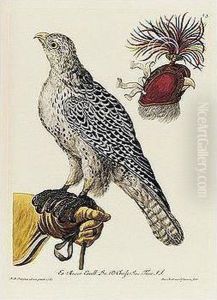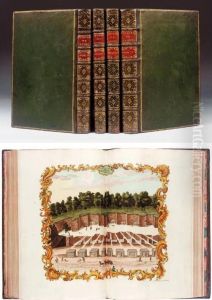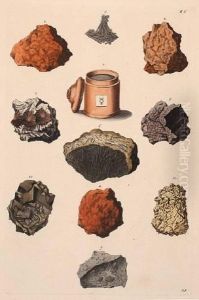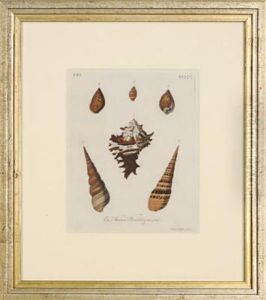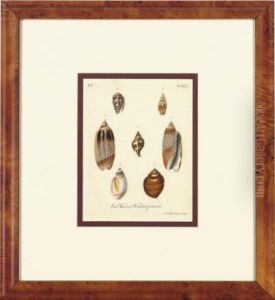Georg Wolfgang Knorr Paintings
Georg Wolfgang Knorr was a German engraver, artist, and natural historian born on December 30, 1705, in Nuremberg, a city renowned for its artistic and cultural heritage during the Holy Roman Empire. His work was highly influential in the dissemination of scientific knowledge through the visual arts during the 18th century.
Knorr developed an interest in natural history and the arts at an early age and was particularly drawn to the world of engraving and illustration. His talents were fostered within the vibrant artistic community of his hometown. He began his professional life as an apprentice under the tutelage of the Nuremberg artist Johann Daniel Preissler. However, Knorr's passion for the natural world soon led him to blend his artistic skills with his interests in the sciences.
Throughout his career, Knorr collaborated with other scientists and collectors to produce beautifully detailed engravings of natural specimens. One of his most significant contributions to natural history and art was a series of works that depicted various subjects such as shells, fossils, and other curiosities from nature. His engravings were not only scientifically accurate but also aesthetically pleasing, which helped make scientific knowledge more accessible to a broader audience.
Knorr's most well-known publication is 'Deliciae Naturae Selectae' or 'Selected Delights of Nature', published posthumously in 1766-1767, which included a wide variety of engravings of natural history subjects. His other notable works include 'Sammlung von Merckwürdigkeiten der Natur und Alterthümern des Erdbodens' (Collection of Natural Curiosities and Antiquities of the Earth) which featured illustrations of fossils and artifacts from the earth's past.
Georg Wolfgang Knorr died on September 17, 1761, in Nuremberg. His legacy is preserved in the numerous prints and engravings he produced, which remain valuable resources for both art and science historians. His work provides a window into the 18th-century European practice of natural history and stands as a testament to the era's quest for knowledge and its expression through the arts.
